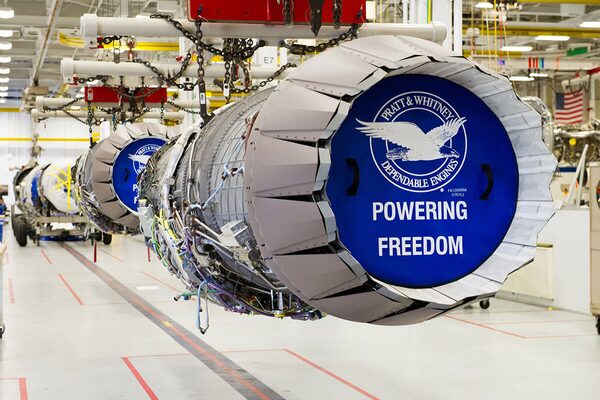
Supplied
There’s the old adage that two heads are better than one. For decades, the same could be said about fighter jet engines. Two were superior, safer and more reliable than one.
But Pratt & Whitney’s F135 engine on the Lockheed Martin 5th-generation F-35A Lightning II is proving that preconception wrong.
Partly designed, tested and built in Canada, the F135 is the world’s most advanced, powerful and dependable fighter engine. It demonstrates a fundamental leap in performance and reliability over 4th-generation fighter engines.
That’s an important consideration for nations like Canada, now seeking to replace its aging McDonnell Douglas CF-18 Hornets with 88 new fighter aircraft.
As the only 5th-generation offering, the F-35 is a leading contender for the federal government’s Future Fighter Capability Project, among competitors that include Boeing’s F/A-18 Super Hornet and Saab’s Gripen E.
To Pratt & Whitney’s David Hierl, deputy chief engineer for the F135 program, the F-35 stands out from the pack. That’s because of its leading-edge technology, particularly its engine.
“It’s easy to have the mindset that two engines must be safer than one,” says Mr. Hierl.
Decades ago, he says that was indeed true of fighter jets. Since the 1970s, however, that’s changed. In fact, two of the best-known fighter jets over the last 30 years – the twin-engine Boeing F-15 Eagle, and the single-engine Lockheed Martin F-16 Fighting Falcon – have comparable safety records.
Mr. Hierl should know. Pratt & Whitney designed the engines for both aircraft. With the F135 engine, the global aerospace company built upon its decades of combat propulsion experience to up the ante on performance, reliability and safety.
The engine, which powers all three variants of the F-35, features a range of 5th-generation engine attributes. They include substantially increased power and thermal management, an innovative engine control system, and an unmatched low-observable signature.
The F135 was also developed specifically for a single-engine fighter application. So it includes an advanced damage tolerant design, and state-of-the-art safety features such as hardware and software level of redundancies.
For example, the hydraulic, fuel and electrical systems on the engine all have backups. Mr. Hierl says the engine’s control system, known as the FADEC (full authority digital engine control) even has a backup.
“Partnered with all the redundancies are advanced prognostic systems, meaning the engine can detect anomalies and notify the pilot before it becomes close to a safety issue,” says Mr. Hierl.

Supplied
The engine can also reconfigure itself in flight upon detection of an anomaly, enabling it to continue operating. This involves millions of lines of code in the engine’s control system and complex algorithms. If any issue is detected, the prognostic will prompt the pilot about the anomaly, to get it checked out by the maintenance crew.
In short, a potential problem is fixed before it becomes an actual problem. Altogether, these advances make the F135 10 times more reliable and 13 times safer than 4th-generation fighter jet engines. These metrics speak for themselves – the F135 is the most dependable fighter engine ever built.
This is underscored by the fact that there have been over 70 “foreign object ingestions” with the F135, including very large birds, instrumentation and other debris. Each time, the engine continued to operate so the pilot could safely land.
All that dependability also comes with unrivaled performance. Responsive and powerful, a single F135 engine can produce more than 40,000 pounds of thrust. That’s more thrust than most twin-engine fighter aircraft, including Canada’s CF-18s.
Additionally, the F135 was designed for and tested in Arctic environments, making the F-35 an ideal multi-use fighter for Canada’s NATO and NORAD responsibilities.
“All fighter jet engines are designed for cold conditions at high altitude,” says Mr. Hierl. “But it’s another thing to start an engine when there’s a deep freeze on the ground.”
Typically, oil and fuel are thicker, presenting challenges to start the engine and have it ready for takeoff if jets are scrambled at a moment’s notice. The F135 is designed with a quick warm-up in mind, able to start quickly and safely in temperatures as low as -40°C. Already, the F135 has performed flawlessly for customers like the Royal Norwegian Air Force and the U.S. Air Force in Alaska, which are operating F-35 aircraft daily in freezing conditions without issue.
Pratt & Whitney and the F135 are no strangers to Canada, with deep roots that span decades. The company has a robust presence in country, employing more than 6,000 people across seven facilities. Additionally, several critical components for the engine are manufactured by seven Canadian suppliers, including companies such as Magellan Aerospace Corporation and GasTops Ltd.
“There is a pretty large supply chain involved,” Mr. Hierl says, noting the F135 engine will continue to have a significant economic impact in Canada over its lifespan. All together, the F-35 program is projected to contribute approximately $16.9 billion to the Canadian economy and support more than 150,000 jobs.
To Mr. Hierl, the F-35 and its F135 engine make the jet the right choice for Canada’s military as its multi-role fighter for the 21st century.
“The F135 is the safest, most reliable, and most powerful production fighter engine in the world,” he says. “There is no other fighter engine that meets all three of those characteristics.”
Advertising feature produced by Globe Content Studio with Pratt & Whitney. The Globe’s editorial department was not involved.